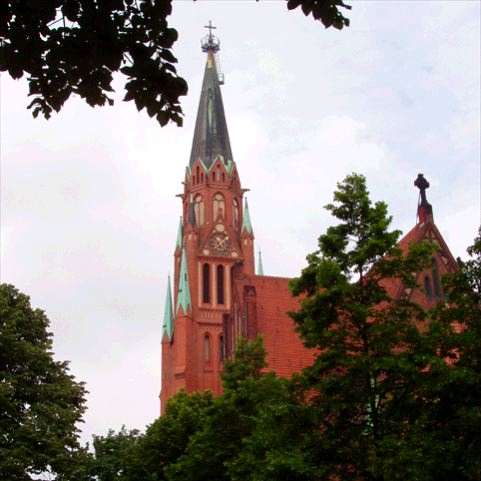

In the church of St. Stephanus, you had old pictures by unknown photographers presented. Originally, these photographs do not include any artistic purpose.
Torsten Prothmann told me that this collection of black-and-white wedding photographs was placed in his living room. I was interested in that, and just at that time I had a desire to make some work in this church. Torsten himself had no artistic demands in the photographs at first, although he is an artist. He just gathered them for years, buying them occasionally on flea markets in Germany and France. With the exhibition, I intended a gesture, a “return” of the wedding pictures into the church. Their juxtaposition introduced a situation of aesthetic perception and of comparison. The presentation – of some 40 framed photographs – was a main concern. And the priest enjoyed the simple cardboard mobile walls too which he could easily move and place.
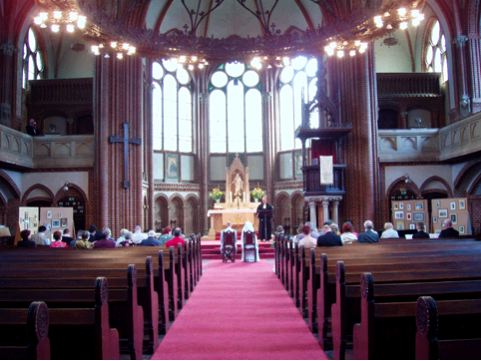
What do you like to get with this exhibition, could you tell more about it?
It is not my interest to show a work of art at an unusual site. I rather try to enable another perception of the site itself, and of the work too, by non-spectacular means. That might work in my eyes only, at first, because it fulfils my personal “vision” of something. Yet, I think mediating the Re-Institutionalize project in the art context will change the perception at the latest.
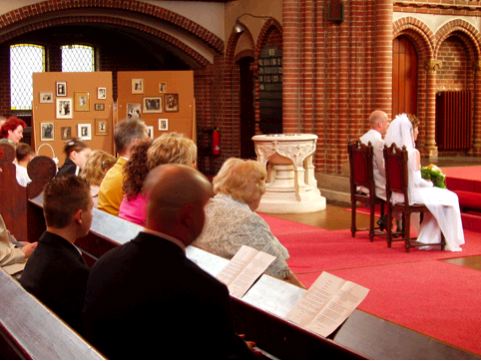
What do you mean by that?
I want to combine the site with a gesture and to show the resulting situation. Those who perceive the project at its site are not ready for being preoccupied with art there, and I don’t want to force them. In St. Stephanus, after a marriage ceremony in which I was a guest a woman said to the priest that she thought it was great that he had documented and presented so many weddings that have taken place in that church ... Her presumption was fine, and I regretted a little bit having to tell her the truth when the priest sent her to me. Perception just always depends on the context and on the interest and knowledge of each individual observer.
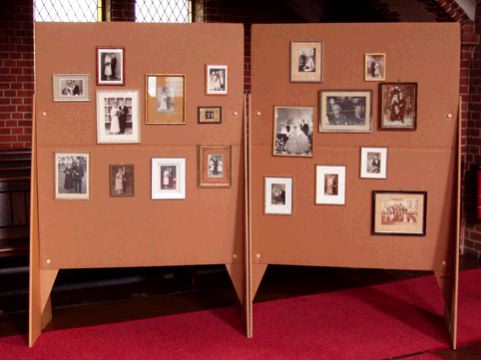
Were personal imaginations relevant for the idea of the making of this show?
I imagine a wedding photograph as something very intimate and, at the same time, something official. Only one picture is chosen, sent to friends and set up at home. I also thought that I wouldn’t appreciate it if someone would find my wedding photograph on a flea market. Perhaps that were reasons why the idea to “bring the pictures back” into the church pleased me. What I like the most concerning churches is their being so empty. That you can experience calmness and the undisturbed effects of the light, the echo, the feeling of space and, if given, art; that’s what I enjoy very much.
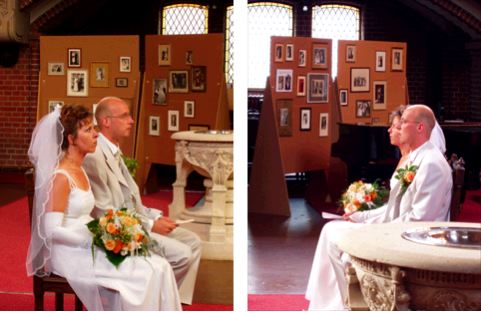
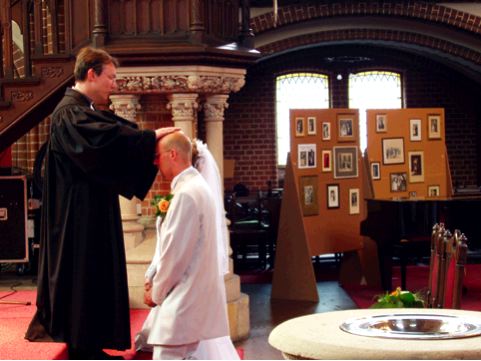
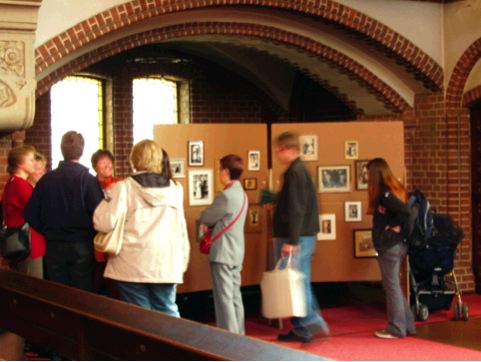
Was it difficult to realize the exhibition? And what about the resonance of the church-goers, apart from the one you’ve mentioned?
Organizing was very agreeable and easy; there was even a church-goer who, together with the priest, hanged the photographs spontaneously. Torsten assisted them and I could concentrate on the filming. Everything worked out just great. – During the show, when I went to this church, I didn’t feel as if I was going to church but as if I was going to visit my exhibition. Even the real wedding there seemed like a performance to me, as part of my exhibition … Of course, this feeling was just mine, and maybe it was such a wonderful feeling – for that very reason! I wish to mediate it in the documentation of the show. Presumably, most church-goers have seen the project as an animation organized by the priest, and that’s also true …
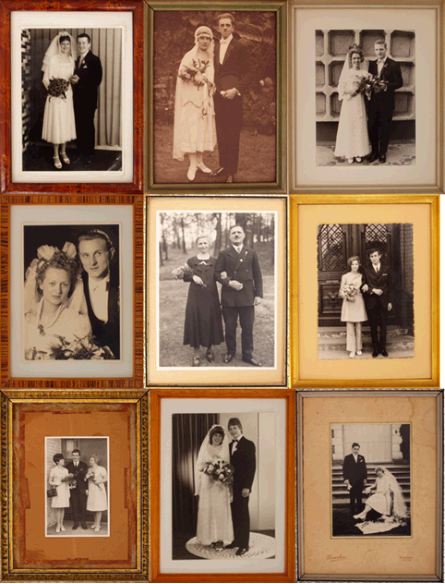
The photographs as such are meaningless to us. Why are they interesting for you?
They are not that meaningless, aren’t they? As I said before, there is this exciting mixture of the official and the intimate. Furthermore, they reflect hope, pride, and, maybe, even love? One can read really quite a lot from such a photograph. And it becomes especially interesting with regard to the quantity of the couples stimulating to speculate if they were well suited to each other, the characters they might have had, and if they became happy. Such observations and this kind of relationship with pictures are not at all so uninteresting, I think.

Do these photographs actually create a changing impression of the space? Is such a subtle effect of an installation not rather eliminated since you co-ordinate things that are anyway appropriate?
The subtlety of this work lies in the fact that the seemingly appropriated is co-ordinated, as it was the case in Salon Picasso and in the Kindergarten (Re-Institutionalize #1 & 2). It is interesting to see how strong the observer is influenced by a context – as the woman who thought it was clear that all the couples shown on the pictures got married in St. Stephanus, although some photographs obviously show couples after their civil wedding (also from the Nazi period). – Anyhow, it was not my concern to make a spectacular site-specific installation. My work is more concerned with a kind of “consecration” of the site and of the objects shown there. To give a pointed example: An African priest consecrates a piece of wood by a magical-religious rite which means that it becomes loaded with a craft and gets a strange position in the community; meanwhile its outer appearance does not seem to be different to any other piece of wood ...
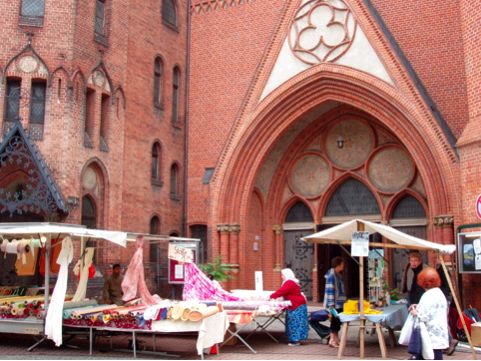
Interview: Heike Wetzig & Kristofer Paetau, July 2004
Re-Institutionalize # 03: St. Stephanus Church